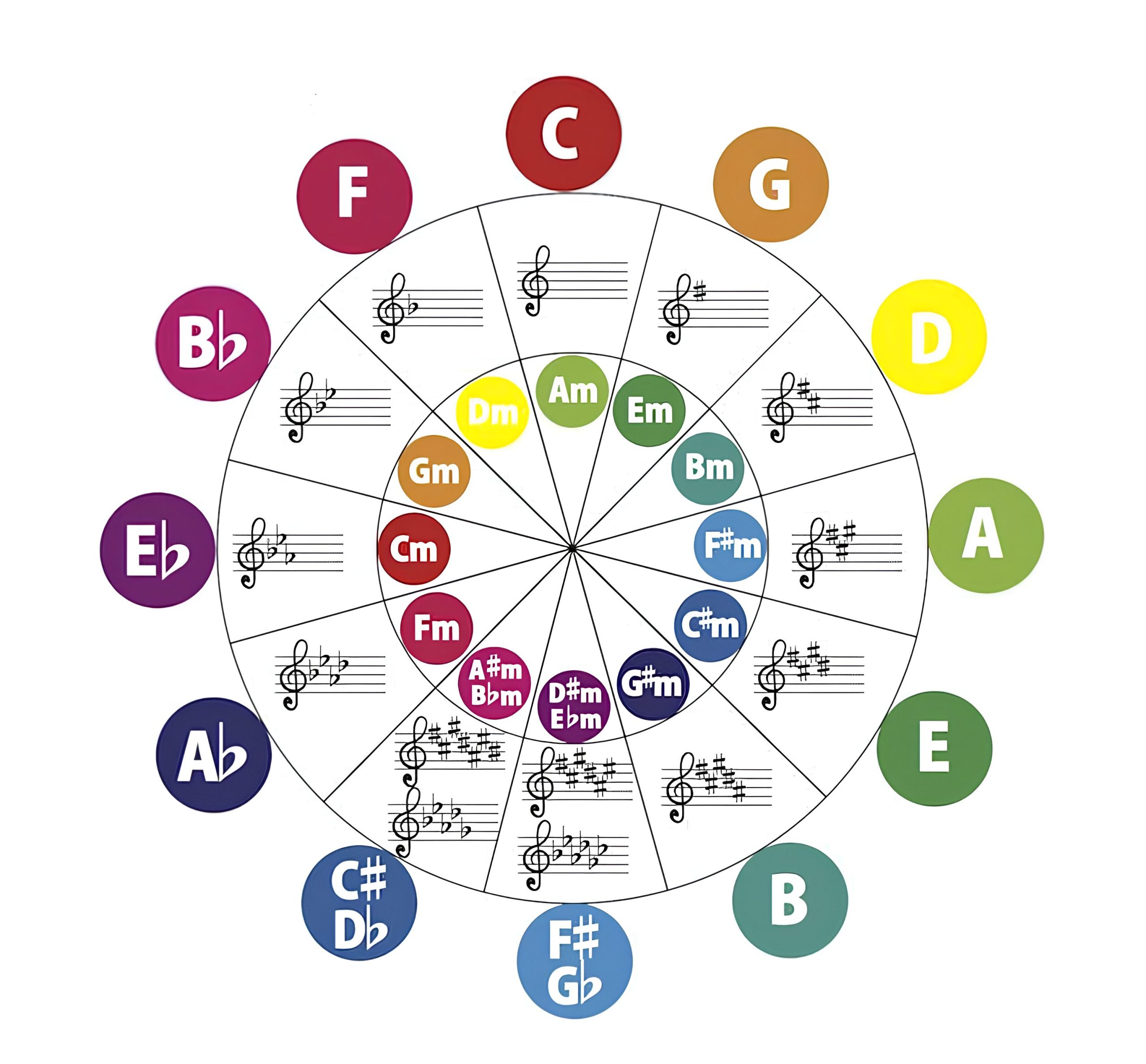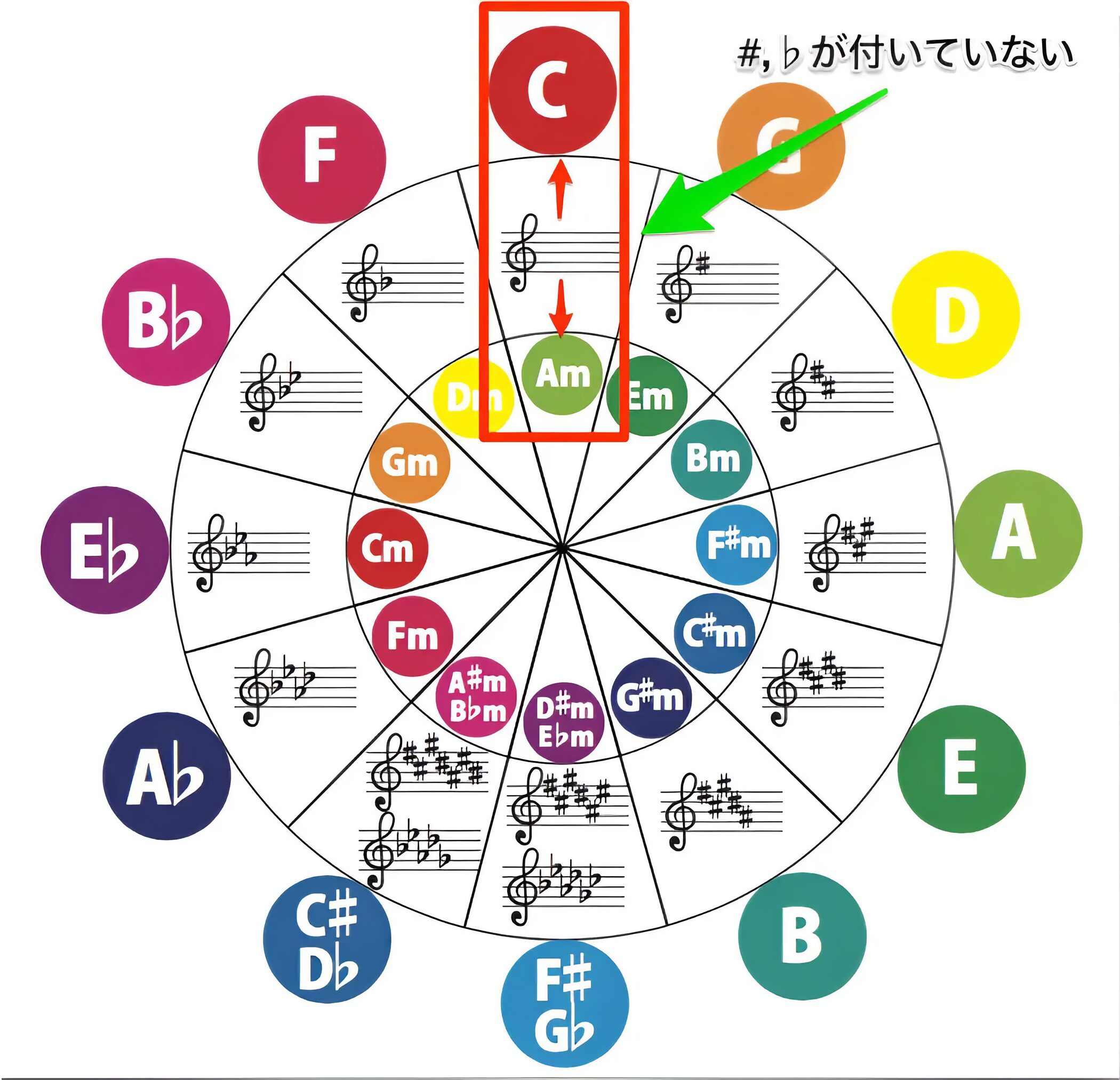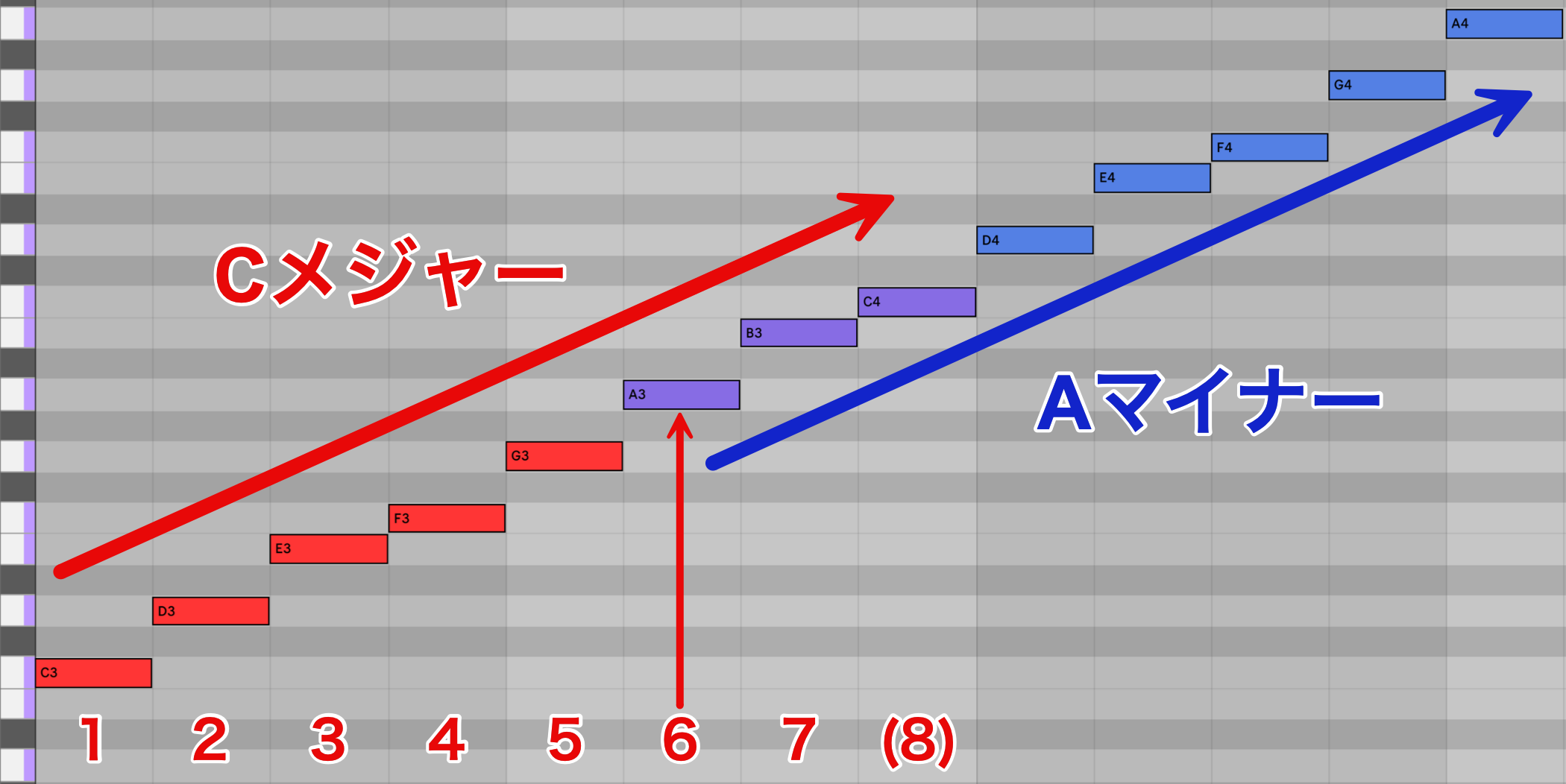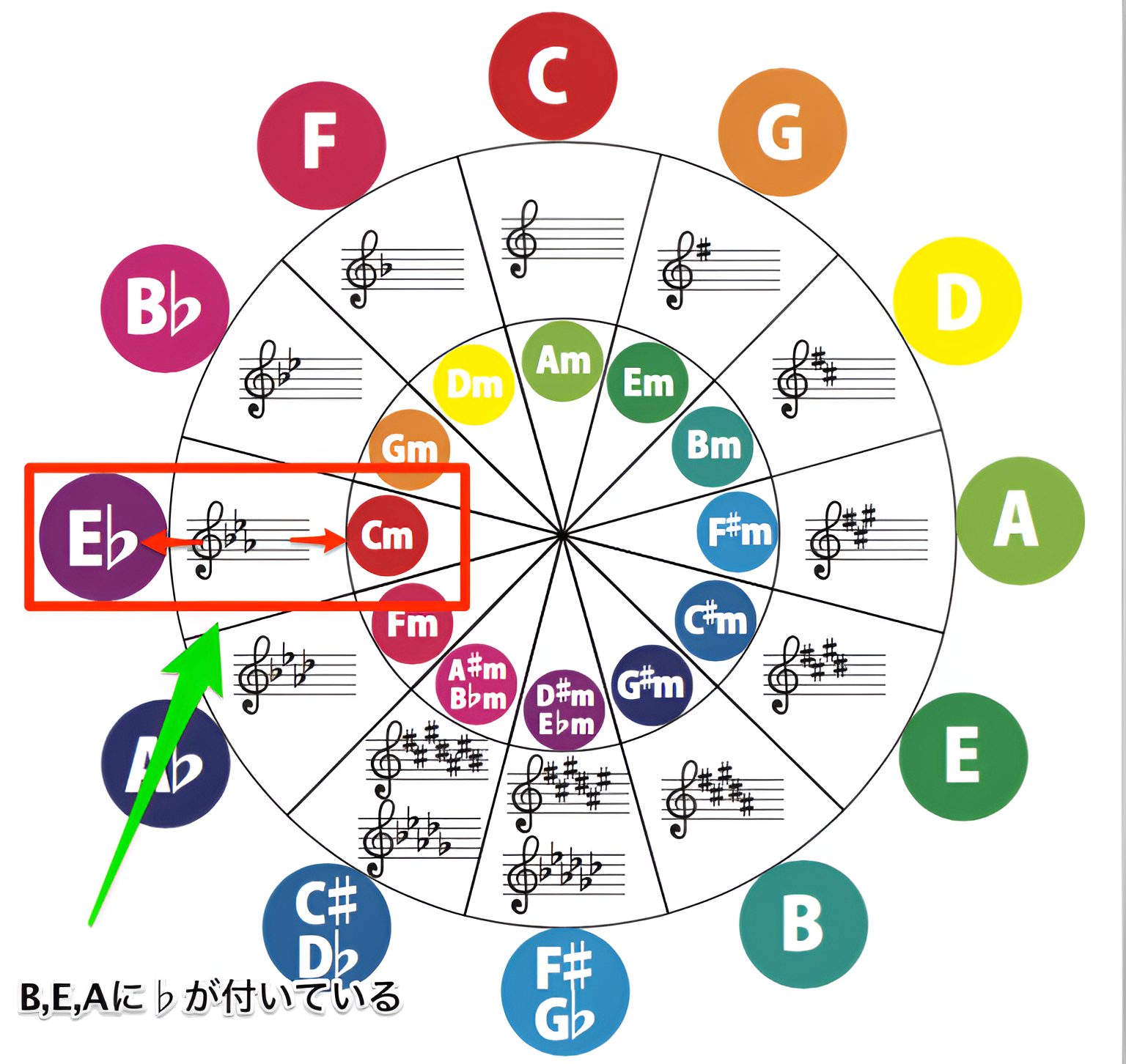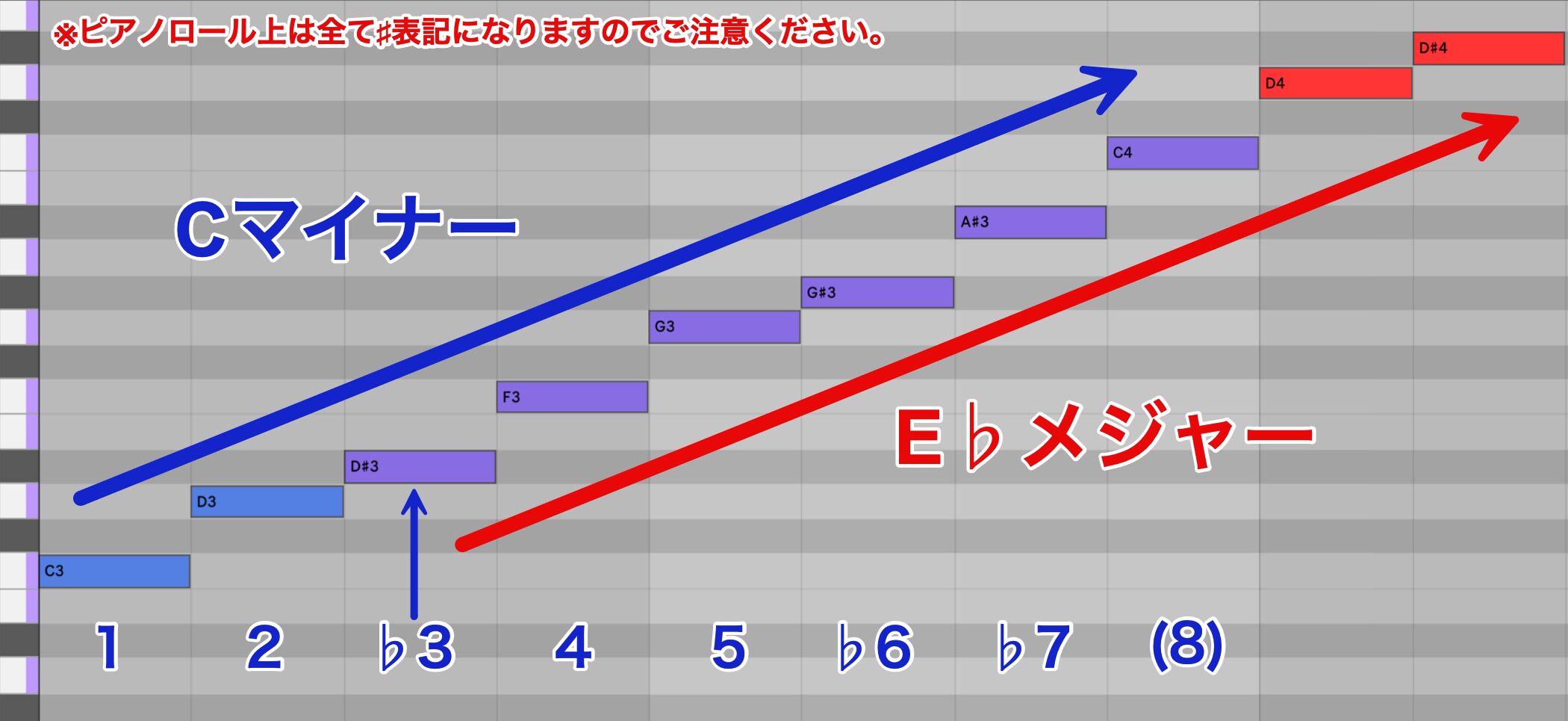レラティブとパラレル/音楽理論講座
メジャーとマイナーの関係性を探る
今回は「レラティブとパラレル」という言葉を使い、メジャーキーとマイナーキーの関係性を確認していきます。
ここまでの解説を把握されていれば、とても簡単に理解できるはずです。
また、講座を進めていくにあたって、この部分の把握は非常に重要となります。
必ずご習得をお願いします。
それでは解説へ入っていきます。
まずは、前回出てきた五度圏(サークル・オブ・フィフス)を見てみましょう。
内側の小文字の「m」がついていたマイナーがありました。
前回の解説で「✴︎内側のm(マイナー)は気にしないでください」と書きました。
ですが、今ならわかります。
Cメジャーキーと、Aマイナーキーに注目してみましょう。
どちらも、#も♭もなく白鍵のみです。
譜面と、ピアノロールでも確認してみましょう。
Cメジャー
Aマイナー
ピアノロールでも確認してみましょう。
メジャースケールの6番目の音から弾き始めると、Aマイナースケールになりますね。
最大のポイントは、始まる音が違うだけで、中身は同じ構成音で作られているという点です。
この、同じ調号によって示されるキー、すなわち基本的に出てくる音たちが同じキーの関係をレラティブキー(平行調)と呼びます。
※Relativeのカタカナ表記は「レラティブ」「リレイティブ」などがあります。
これは全て同じ意味となります。
上記の結果から、Cメジャーに対する、レラティブキーはAマイナーということですね。
Cメジャーのレラティブマイナーは、Aマイナーとも言います。
これを踏まえて、前回に解説を行った「Cマイナースケール」に注目してみましょう。
♭が3つ(B,E,A)付いているメジャーキーはどこでしょうか。
Cmの所に注目してみましょう。
E♭メジャーですね。
Cマイナースケールと同じく、B,E,Aに♭が付いていますね。
E♭メジャーに対する、レラティブキー、レラティブマイナーはCマイナーということですね。
ピアノロール上で打ち込んでみましょう。
マイナースケールの♭3からそのまま上に行くとレラティブキーのメジャーになります。
そして、もう一つのパラレル(同主調)についても確認してみましょう。
これは後々のテクニックで重要になってきます。
シンプルに説明しますと、同じ音から始まる、同じ主音を持つということです。
- Cメジャーのパラレルキー、パラレルマイナーは、Cマイナー
- Aメジャーのパラレルマイナーは、Aマイナー
となります。
前回の復習となりますが、メジャースケールの3,6,7を半音下げると、マイナースケールができます。
よって、パラレルマイナーが作成されたということになりますね。
この関係も、同時に覚えてしまいましょう。





